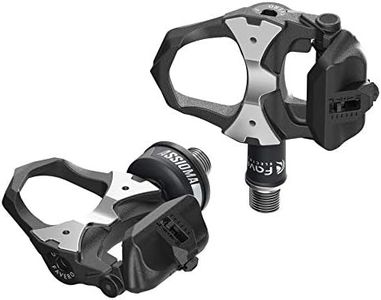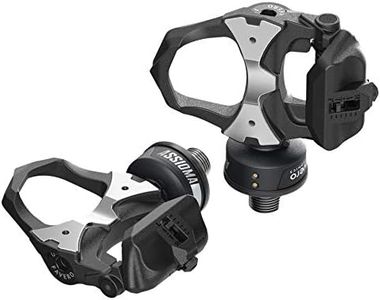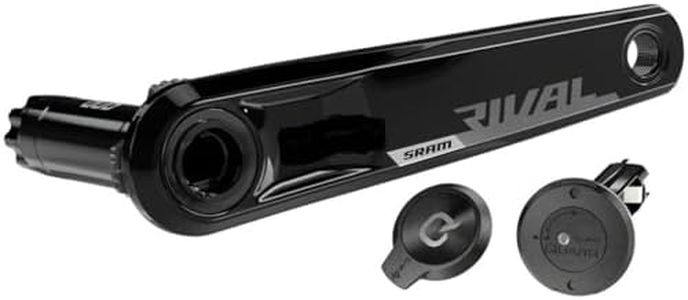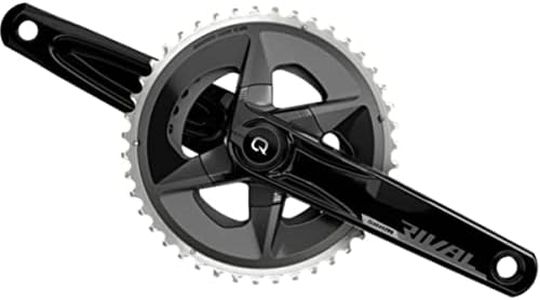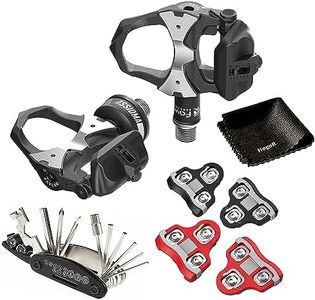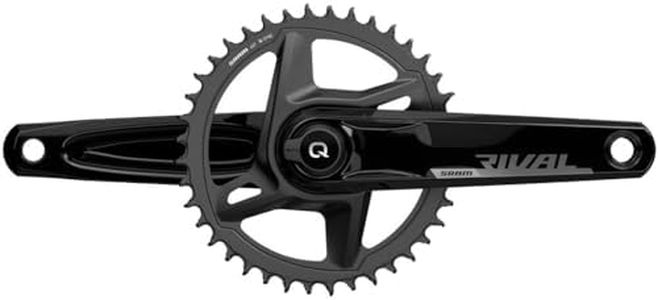We Use CookiesWe use cookies to enhance the security, performance,
functionality and for analytical and promotional activities. By continuing to browse this site you
are agreeing to our privacy policy
8 Best Cycling Power Meters
From leading brands and best sellers available on the web.Buying Guide for the Best Cycling Power Meters
Choosing the right cycling power meter can significantly improve your training and understanding of your riding performance. Power meters measure the actual power output of your pedaling, helping you train more effectively based on accurate data. To find the best fit, consider the type of riding you do, your bike setup, and how you plan to use the data. Focus on how easy it will be to install and maintain, what kind of data you'll get, and how you'll interact with the device day-to-day.Power Meter Type (Location of Measurement)Power meters can be located at the crank, pedal, hub, or spider. This describes where the power is measured on the bike, and it influences accuracy, compatibility, and ease of transfer between bikes. Crank and spider types are usually more integrated into your drivetrain, offering stability and high accuracy. Pedal-based meters are easy to transfer between bikes and are great for those who want flexibility. Hub-based meters are less common nowadays but are very reliable. When choosing, think about whether you’ll use the meter on multiple bikes and if you are comfortable with installation. If you value convenience, pedal meters might be best. If you want a clean, integrated look, crank or spider versions are ideal.
Measurement (Single-Sided vs. Dual-Sided)This spec refers to whether the power meter measures the output from one leg (single-sided) or both legs (dual-sided). Dual-sided meters capture separate data from each leg, providing more detailed analysis and higher accuracy, especially if your legs are not equally strong. Single-sided meters are simpler, lighter, and often sufficient for casual riders. If your primary goal is general training improvement, single-sided may be enough. For advanced training or if you suspect leg imbalance, dual-sided is better.
CompatibilityCompatibility means making sure the power meter fits your bike’s components (crankset, pedals, frame, and drivetrain). There are many standards in cycling, so it’s important to check whether the meter matches your crank type, chainring size, or pedal system. If you are upgrading an existing bike, check your bike’s specs carefully. If you are building a new bike, you have more flexibility. Always double-check the compatibility guides before buying.
Battery Type and LifePower meters use either replaceable batteries or rechargeable batteries. Battery life matters because it affects how often you have to maintain your power meter. Replaceable batteries are simple: swap them out and keep riding. Rechargeable batteries are convenient for those who regularly remember to charge their devices. Consider your preference for maintenance and riding habits. If you don’t like charging things often, look for longer battery life with replaceable types.
Data ConnectivityThis means how the power meter sends its data to your cycling computer or phone, usually via ANT+ or Bluetooth. Almost all modern power meters offer both, ensuring easy connection to most cycling computers and apps. If you have a preferred device for tracking rides, make sure the power meter supports its standard. For most people, as long as both ANT+ and Bluetooth are present, compatibility isn't a worry.
AccuracyAccuracy tells you how close the power meter's measurements are to your true power output. Most good meters have a margin of error around ±1% to 3%. Higher accuracy is more important for competitive cyclists or those who want the best data for training analysis. Recreational riders can be comfortable with a wider margin. Match your training goals with the level of precision you require.
WeightThe weight of a power meter affects your overall bike mass. Most power meters are designed to be lightweight, but some types (like pedal or crank) can add more weight than others. For most riders, especially casual cyclists or those training for fitness, a few extra grams won’t make a big difference. Performance-focused cyclists may want the lightest option possible. Assess how much importance weight has in your riding style.
